How and when to plant hyacinth bulbs: easy tips for a gorgeous spring display
Learn how and when to plant hyacinth bulbs and you'll be rewarded by sweetly-scented blooms in a spectrum of colors

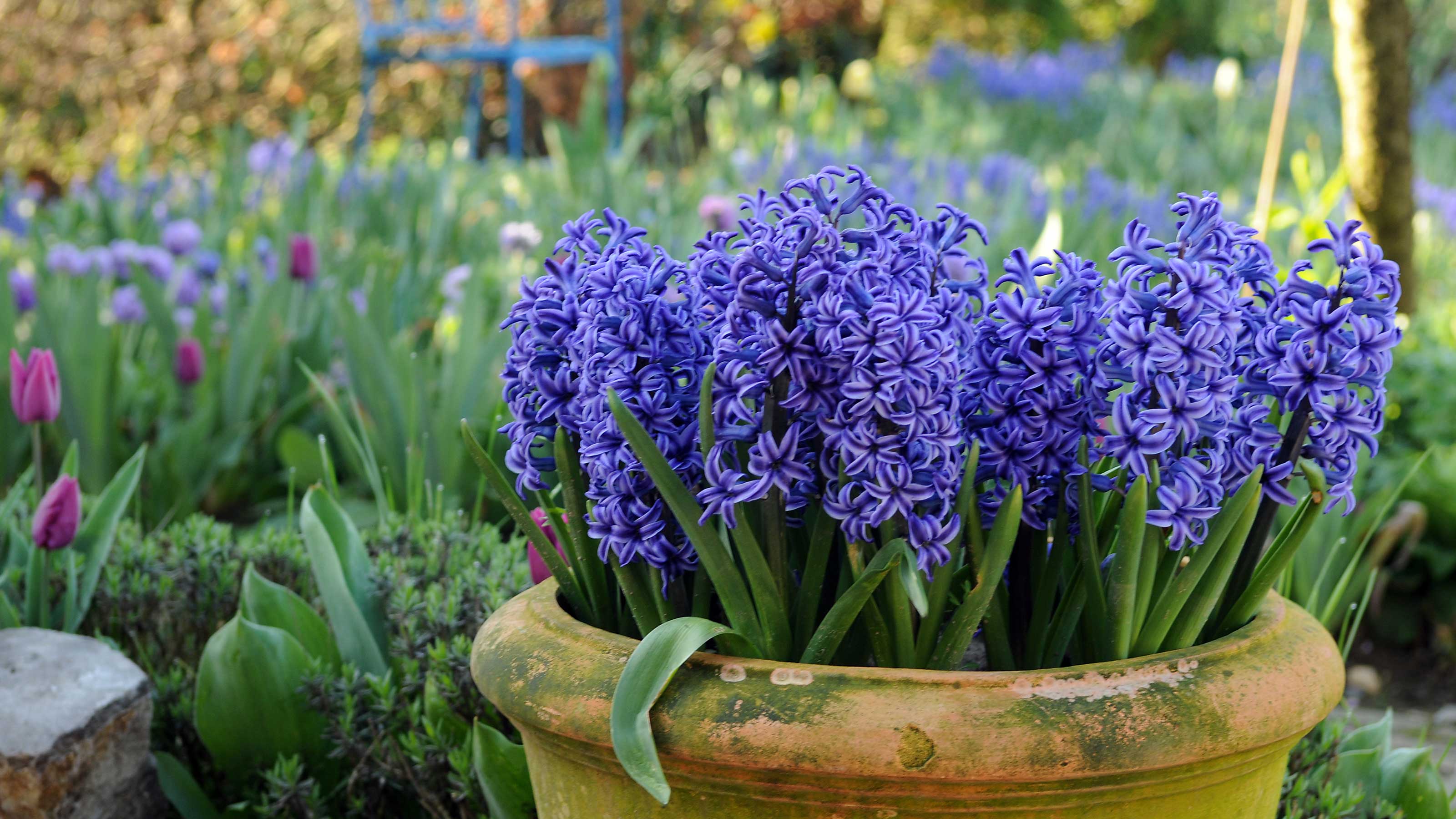
Knowing how and when to plant hyacinth bulbs is key if you want to enjoy a show-stopping display. And the best part is, they're easy to grow and super versatile as can be grown in pots, in the ground, or even indoors.
Planting bulbs is a lovely way to look ahead and prepare your plot for spring. And alongside other favorites – think tulips, daffodils and crocuses – hyacinths are a must-have for the list. 'If you are looking for a sturdy addition to your garden, hyacinths are the flower to plant this autumn,' says Morris Hankinson, Director of Hopes Grove Nurseries. 'They come in distinctive shades of purple, pink, white and blue and have a sweet smell.'
To help you get started, we've rounded up all the tips you need on how to plant hyacinth bulbs, including how to plant hyacinth bulbs indoors.
When to plant hyacinth bulbs
Wondering when to plant hyacinth bulbs? Like other spring-flowering bulbs, most hyacinths should be planted in autumn – between September to early November in the UK and US. They will flower the following spring, in March–April.
You can, however, grow hyacinths indoors in time for Christmas. To do so, it's best to invest in the slightly more expensive, pre-prepared bulbs (they will have been specifically treated with heat before you buy them), and plant them in September.
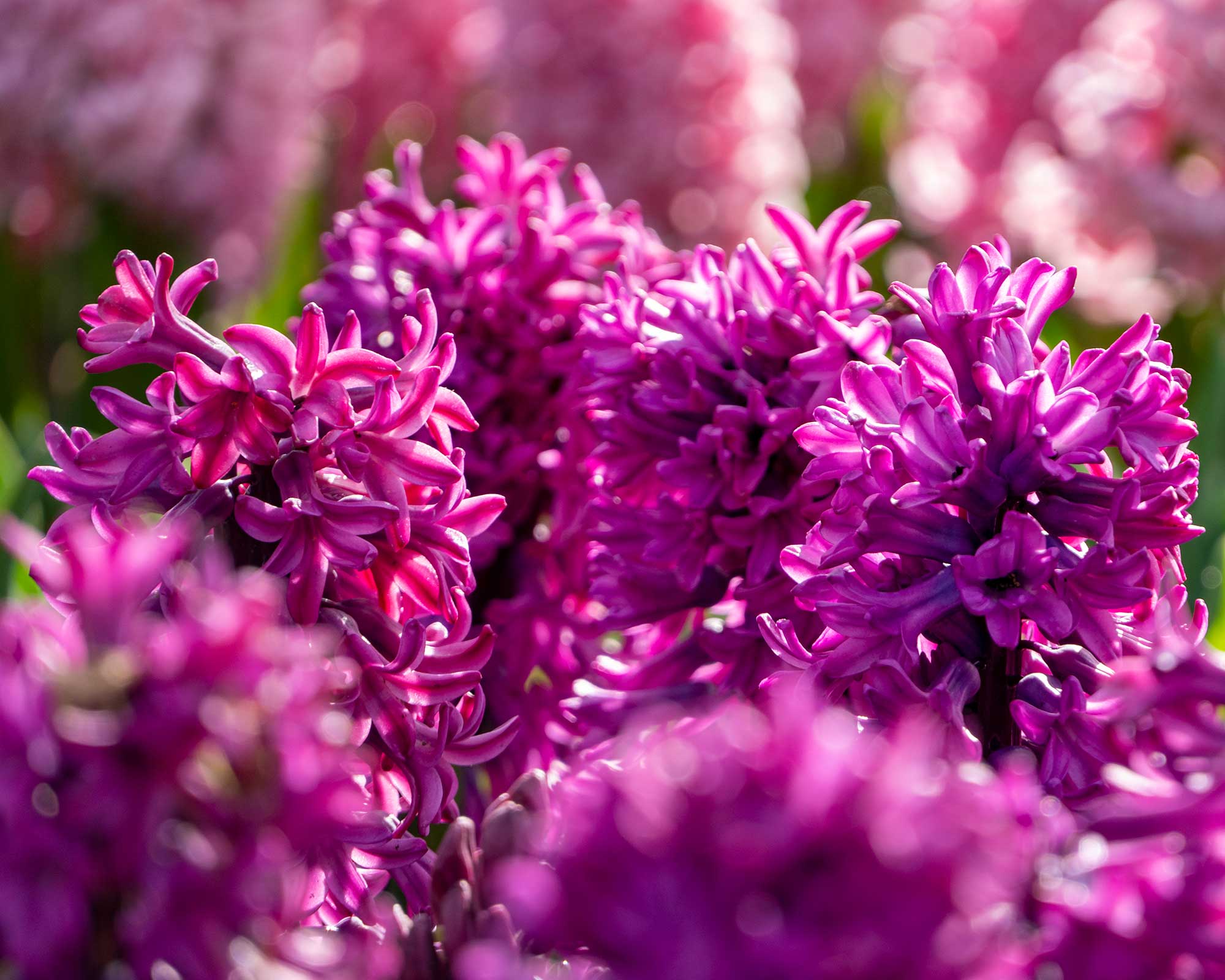
How to plant hyacinth bulbs in the ground
Hyacinths make a wonderful addition to flowerbeds. You can plant the bulbs straight into the soil.
- Always wear gloves when handling hyacinth bulbs as they can irritate bare skin.
- Prepare your flowerbeds by removing any weeds and digging in some peat-free compost. You can learn all about DIY composting in our guide.
- Plant your bulbs, pointy bit facing upwards, at a depth of around 10cm (4in), with around 8cm (3in) between each.
- Cover with soil, gently firm in, and water.

How to plant hyacinth bulbs in containers
A planter full of cheerful hyacinths is a fabulous way to brighten up a patio or deck.
- Fill your containers with peat-free multi-purpose potting compost.
- For a nice, full display, plant at least three bulbs 10cm (4in) deep and about 8cm (3in) apart. If you're making a one-off display, you can plant them closer together – around 5cm (2in) apart.
- It's a good idea to raise large containers by placing them on top of bricks or 'pot feet'. This will help to improve drainage.
- If you have very cold winters, protect your bulbs by wrapping the containers with bubble wrap, as suggests the RHS.
- Top-dress the containers with a slow-release fertilizer in spring. You can find out more about fertilizing plants with our guide.
- Remember to keep the soil moist, but don't overdo the watering – you don't want them to become waterlogged.
You can also use hyacinths as part of a bulb lasagne, where bulbs are planted in layers to result in a long-lasting spring display. You can learn all about how to plant a bulb lasagne in our guide, whilst our bulb lasagne ideas feature has lots of lovely looks to try.
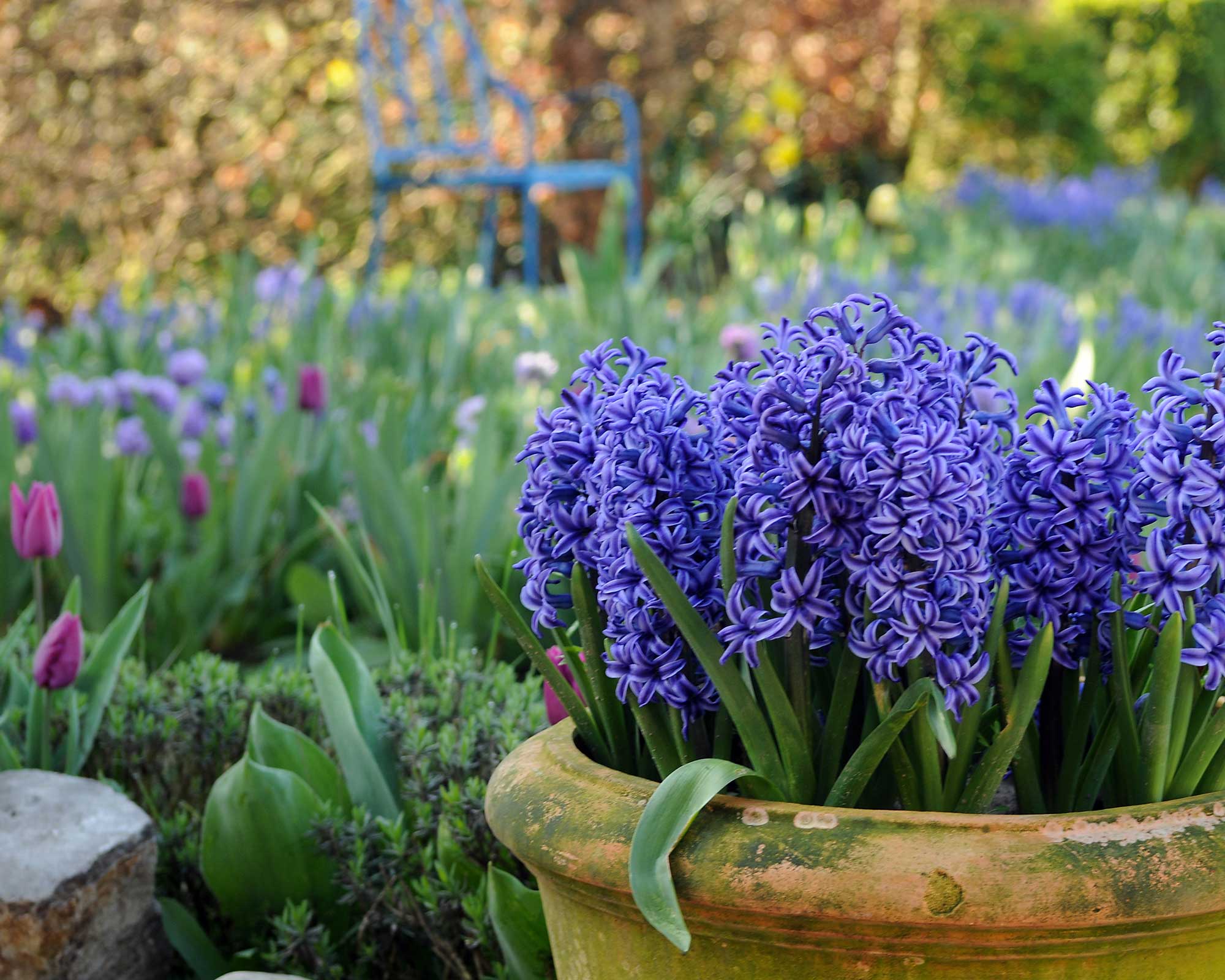
How to plant hyacinth bulbs indoors
Hyacinths aren't just for outdoors. Learning how to plant hyacinth bulbs indoors is easy too, and means you can enjoy their beauty and fragrance throughout your home in winter. 'They are guaranteed to lift your mood,' says iBulb.
- As mentioned above, you'll need to buy special bulbs which have been prepared for 'forcing'.
- Grab your chosen container, add a layer of compost, and plant your bulbs quite close together but not touching, with their pointy sides facing up.
- Fill the gaps with more compost, allowing the tips of the bulbs to poke through the top.
- Top the compost with a layer of grit and water sparingly.
- Cover the containers with black bin liners or a thick layer of newspaper and place somewhere dark and cool, such as a shed or garage. Leave them for around 6–10 weeks, checking periodically and watering if the soil feels dry. 'But be careful,' warns iBulb, 'too much water will cause the bulbs to rot.'
- Once you can see a few inches of green growth, remove the covers and position the pots somewhere bright and airy – a windowsill is ideal. Avoid positioning them near a radiator.
- Water whenever the soil feels dry to the touch. In three weeks or so, they should be blooming.
- Once they've finished flowering, you can tip out the bulbs and plant them in your garden to enjoy again the following year.
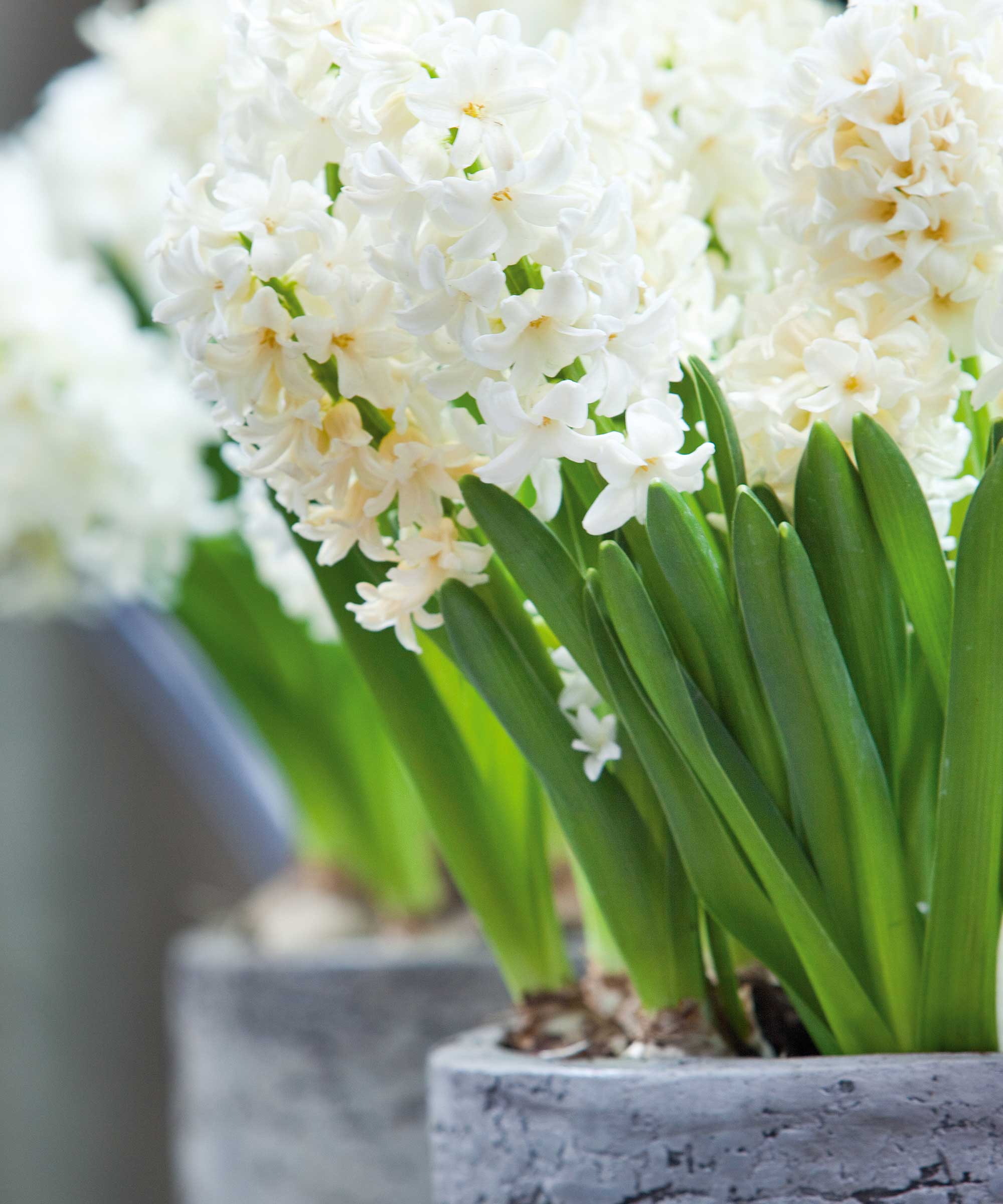
You can also grow hyacinth bulbs indoors in special glass vases (try Amazon). This method doesn't require any compost, so there's no mess involved, and the results look beautifully elegant.
Avoid letting the water touch the bottom of the bulb, and place them in a dark, cool place until the vase fills with roots and stems emerge. Once this happens, the RHS advises gradually increasing the amount of warmth and light.
Hyacinth bulbs grown in this way are usually discarded after flowering. Alternatively, you can plant them in your garden to try your luck for next year.
You can find even more tips on how to force bulbs indoors in our guide.
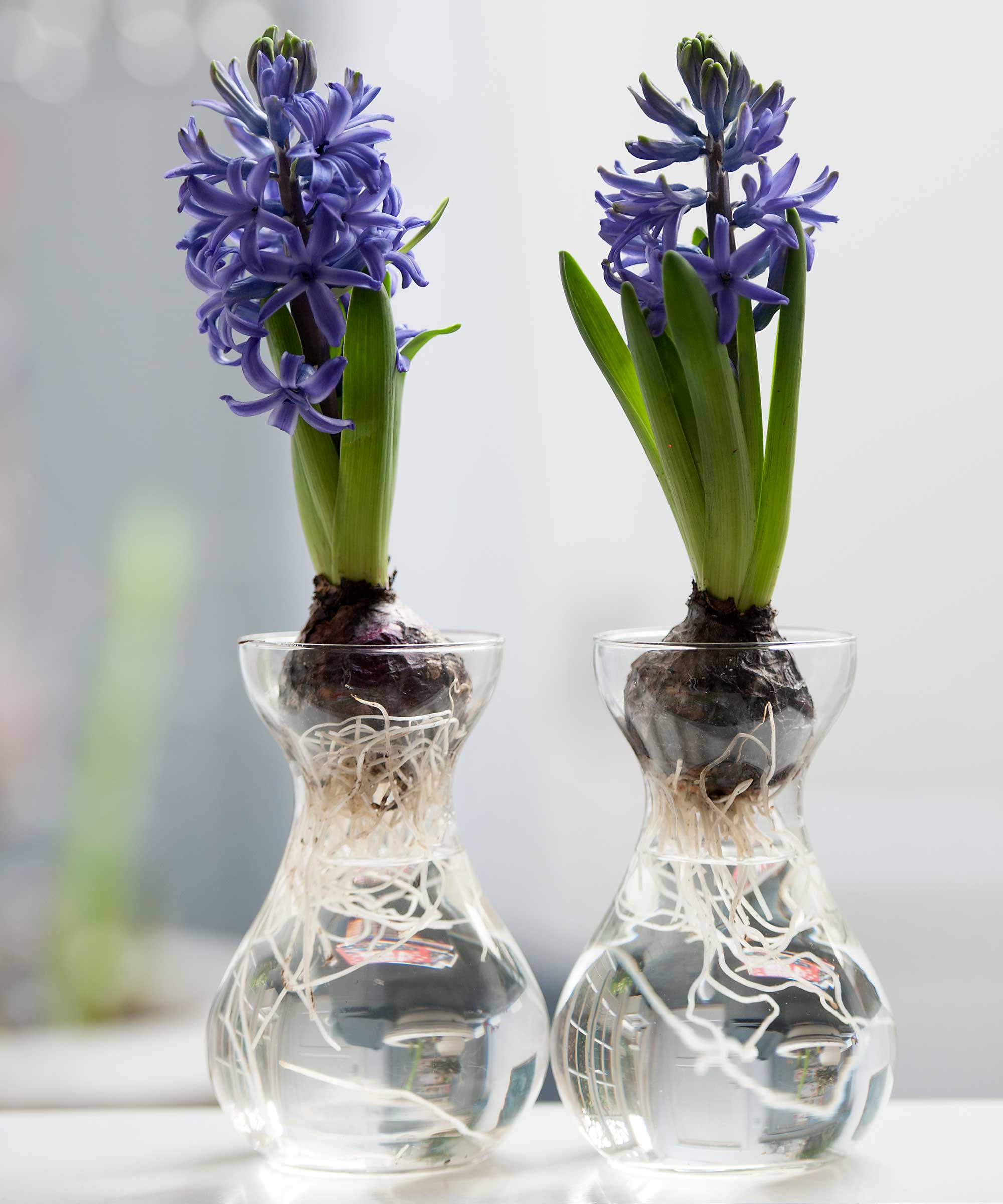
Where should you plant hyacinth bulbs?
When planting outdoors, hyacinth bulbs need well-drained soil with a good amount of sun. If your garden has heavy soil but you still want to plant your hyacinths in the ground, add a handful of grit to the bottom of each planting hole before adding the bulb. This will help to improve drainage.
Indoors, they do best in well-lit rooms after the initial covered phase, at a temperature of around 55°F (18°C).
- Why stop with just hyacinth bulbs? For even more color in the spring garden, our guides on how to plant daffodil bulbs and how to plant tulips are definitely worth a peruse.

Do hyacinths come back every year?
Outdoors, 'hyacinths reliably return every year once the bulbs are planted,' says Morris Hankinson, Director of Hopes Grove Nurseries.
However, their performance does somewhat decline a little, with flowers becoming smaller (albeit still beautiful). There's no real reason to replace them – you can always just add a few new bulbs each year to keep the show looking tip-top.

Are hyacinth bulbs toxic?
Unfortunately, hyacinths – like most other bulbs – are toxic. That's why you should always wear gloves when handling them, to avoid them irritating your skin, and keep them safely away from children.
Hyacinths – all parts, but especially the bulbs – are also very poisonous to cats and dogs. So, if you have a four-legged friend or two that loves to dig, it might be worth avoiding them altogether. If you suspect your pet is suffering from hyacinth poisoning, seek advice from a vet immediately.
You can find more info on the most poisonous plants for dogs and plants that are poisonous to cats in our guides.

Where to buy hyacinth bulbs
Now you know how and when to plant hyacinth bulbs, chances are you'll be keen to get your hands on some. Whilst they are normally available in garden centers from late summer to autumn, you can also buy them online for extra convenience.
Our quicklinks will help start your search.
Where to buy hyacinth bulbs in the UK:
- Shop hyacinth bulbs at Amazon
- Shop hyacinth bulbs at Crocus
- Shop hyacinth bulbs at Dobies
- Shop hyacinth bulbs at Suttons
- Shop hyacinth bulbs at Thompson & Morgan
- Shop hyacinth bulbs at You Garden
Where to buy hyacinth bulbs in the US:
- Shop hyacinth bulbs at Amazon
- Shop hyacinth bulbs at Burpee
- Shop hyacinth bulbs at The Home Depot
- Shop hyacinth bulbs at Walmart

The garden was always a big part of Holly's life growing up, as was the surrounding New Forest where she lived. Her appreciation for the great outdoors has only grown since then. She's been an allotment keeper, a professional gardener, and a botanical illustrator – plants are her passion.
